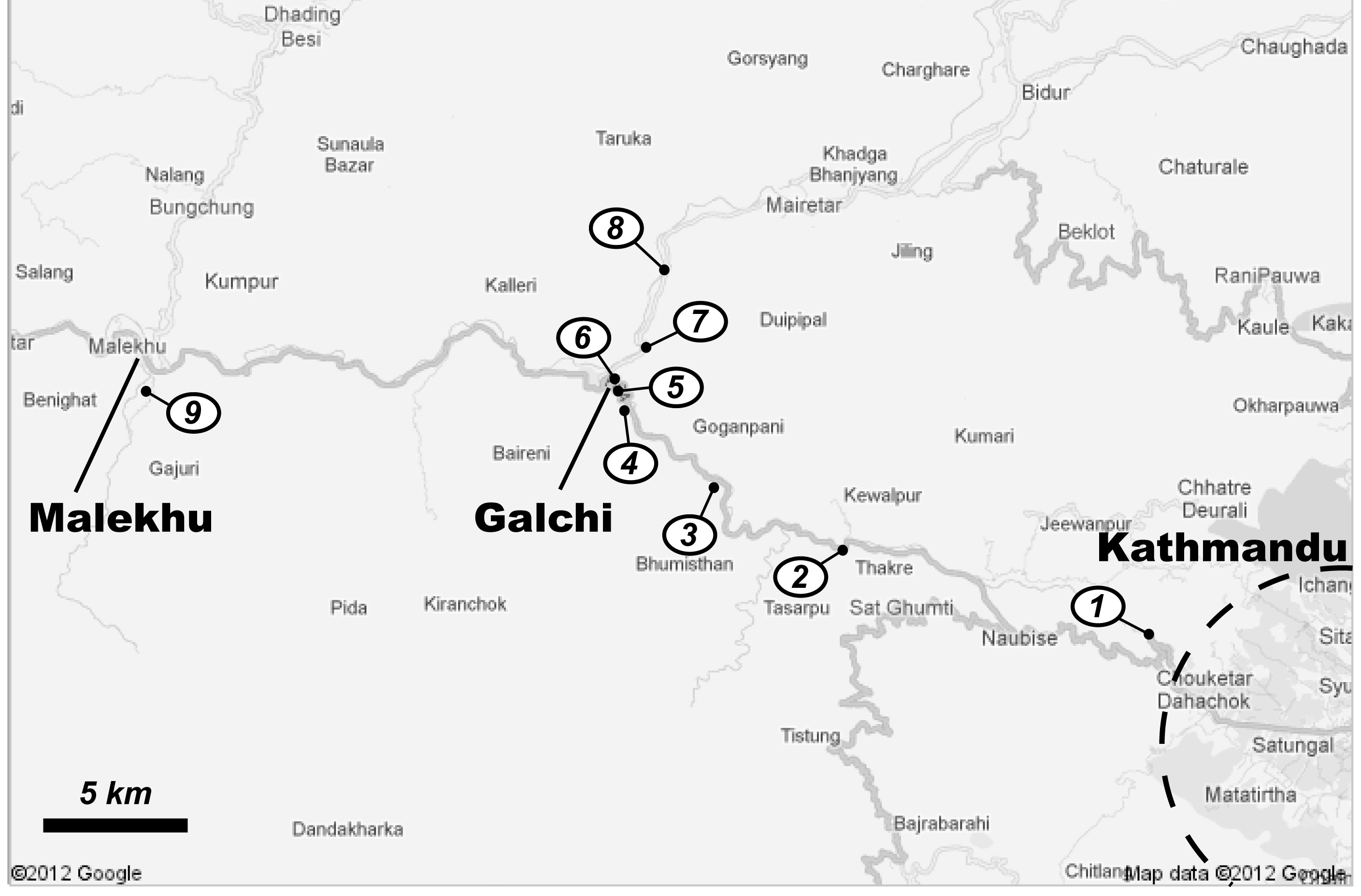Introduction
The Kathmandu Nappe is one of a series of klippen and half-klippen in the southern Himalaya which are collectively referred to as the Lesser Himalayan Crystalline Nappes or the Outer Crystalline Klippen (Figure 1). These rocks outcrop across the Nepal Himalaya, throughout the Kumaun and Garhwal regions of northwestern India, and perhaps as far west as Kashmir (Stöcklin, 1980; Windley, 1988). Equivalents may also occur in Bhutan (Bhargava, 1995). Rocks are divided into two sequences: the Bhimphedi Group below and the Phulchauki Group above (Stöcklin, 1980).
Figure 1. Geological map of Nepal from Upreti (1999)

Unit abbreviations: the acronym “LH” means “Lesser Himalayan,” but in this legend it is always used in reference to the Lesser Himalayan Crystalline Nappes (which have disputed tectonic affinity, see text). TTS = Tibetan-Tethys Series ≈ Tethyan Himalayan Sequence; HH = High Himalayan ≈ Greater Himalayan Crystalline complex. Fault abbreviations: MBT = Main Boundary thrust; MCT = Main Central thrust; MT = Mahabharat thrust; STDS = South Tibet detachment system.
The Lesser Himalayan Crystalline Nappes remain an enigma within the context of the three layers, two fault stack that dominates the Himalaya (i.e., the Lesser Himalayan Sequence below, Greater Himalayan Crystalline complex in the middle, and Tethyan Himalayan Sequence above, with the Main Central thrust separating the Lesser Himalayan Sequence from the Greater Himalayan Crystalline complex and the South Tibet detachment dividing the Greater Himalayan Crystalline complex from the Tethyan Himalayan Sequence above). Each of the three major tectonic units have been put forward by different workers as correlative to the Lesser Himalayan Crystalline Nappe rocks; alternatively these rocks may be broken into different sub-units that variably correlate to the different tectonic units (e.g., Upreti and Le Fort, 1999; Webb et al., 2011). Likewise, the basal fault may represent the southern extension of the Main Central thrust or a distinct structure (e.g., Upreti and Le Fort, 1999; Johnson, 2005).
The one-day field trip described herein allows consideration of the problem of the Lesser Himalayan Crystalline Nappes in the context of the stratigraphy, metamorphism, and structure exposed across the northwestern Kathmandu Nappe (Figure 2) and provides a fun, fast excursion into the rich geology of Nepal. It is based on a one-day field excursion organized by the authors in support of the 2012 Himalaya-Karakoram-Tibet Workshop, which was hosted by the Nepal Geological Society in Kathmandu. The trip assumes an early start from Kathmandu (before the heavy traffic starts), and largely follows the highway heading northwest out of the city towards Pokhara (Figure 3). Most stops are in the vicinity of the village Galchi, near the confluence of the Mahesh Khola and the Trishuli River. Expect to eat lunch at Galchi. Time permitting; the trip includes an excursion ~20 km farther west to just south of the village Malekhu. This excursion offers a section through the base of the Kathmandu Nappe that contrasts in metamorphic grade and deformation history vs. the Galchi section, promoting consideration of the implications of these differences.
Figure 2. Geological map of the northwestern Kathmandu Nappe

Geological map of the northwestern Kathmandu Nappe modified from Stöcklin and Bhattarai (1982), with stratigraphic column from Stöcklin (1980) as modified by Upreti (1999). The Phulchauki Group-Bhimphedi group contact has been interpreted alternatively along an unconformity within the Tistung Formation by Gehrels et al. (2006)
Figure 3. Google Road Map

The trip assumes an early start from Kathmandu and largely follows the highway heading northwest out of the city towards Pokhara. Most stops are in the vicinity of the village Galchi, near the confluence of the Mahesh Khola and the Trishuli River